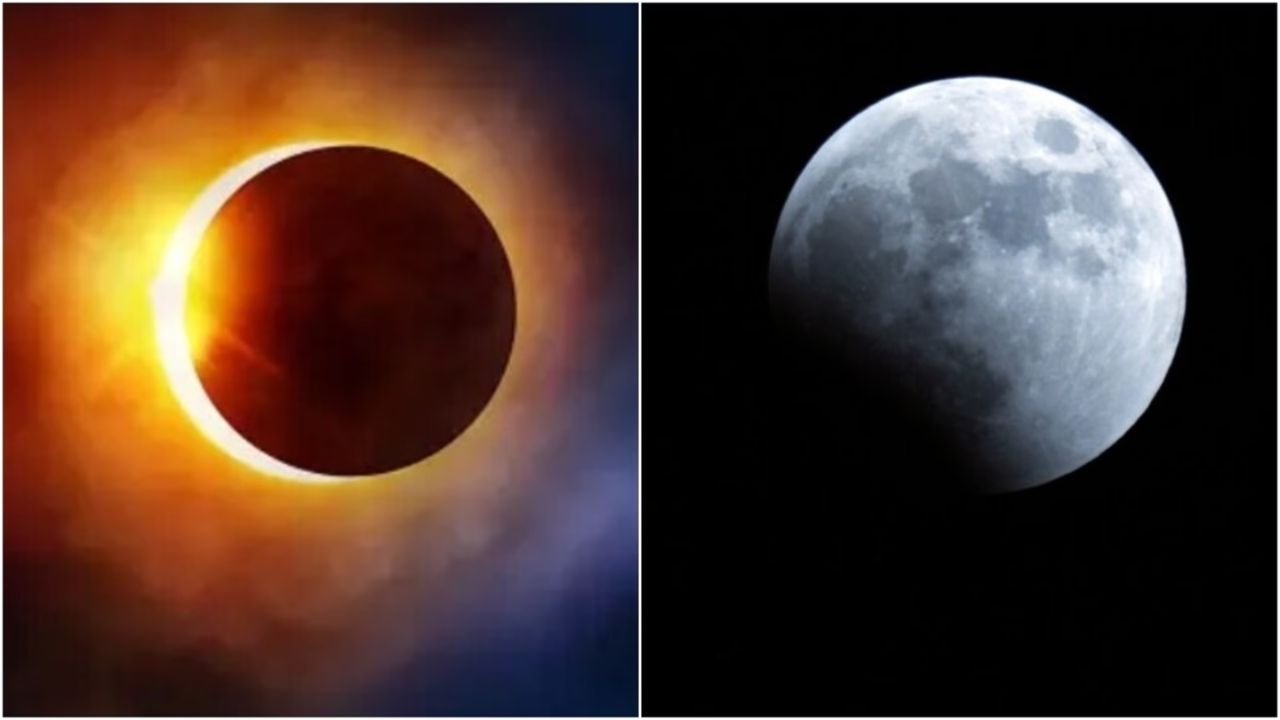Lunar & Solar Eclipse in 2024: All you need to know
April 8 is the date of the first Solar Eclipse of 2024. There will be a total eclipse of the sun.

Lunar & Solar Eclipse in 2024: A close meeting with a huge asteroid and amazing solar flares were just a few of the amazing things that happened in space in 2023. Two solar eclipses and one lunar eclipse are two big events that skywatchers can look forward to in 2024. Here are the specifics:
Solar Eclipse 2024
April 8 is the date of the first Solar Eclipse of 2024. There will be a total eclipse of the sun. Crossing North America, it will go over Mexico, the US, and Canada. It will start over the South Pacific Ocean. At the same time, the Partial Solar Eclipse will happen in many places, such as Jamaica, Costa Rica, Cuba, Aruba, the Cayman Islands, Dominica, French Polynesia, and Cuba. According to the Drik Panchang, these are the times and Sutak periods:
- The eclipse will begin at 3:42 pm (UTC).
- Time of the end of the eclipse: 4:36 pm (UTC)
- Eclipse’s peak time is 6:17 pm (UTC).
On October 2, there will be the second Surya Grahan. The type of eclipse will be an annular one. When the New Moon moves in front of the Sun but doesn’t cover the whole disk of the Sun, this is called an annular solar eclipse or a ring of fire solar eclipse. People in Argentina and Chile in South America will be able to see the Annular Eclipse. People in North America, Antarctica, the Pacific Ocean, the Atlantic Ocean, and South America will be able to see the Partial Solar Eclipse. According to the Drik Panchang, these are the times and Sutak periods:
- The eclipse will begin at 3:42 pm (UTC).
- The eclipse will end at 4:50 pm (UTC).
- Full Eclipse at 6:45 p.m. (UTC)
India will not be able to see either eclipse. So, the Sutak time doesn’t work for this time.
Check Out: The National Fascination with the 1996 Murder of JonBenét Ramsey
March 25: Lunar Eclipse with a Penumbral Shape
—This will be a Penumbral Lunar Eclipse, and people in Europe, Australia, Africa, North and East Asia, North America, South America, the Pacific, and Antarctica will be able to see it.
Times (UTC):
- Penumbral Eclipse: 4:53 am
- – Maximum Eclipse: 7:12 am
- – Penumbral Eclipse Ends: 9:32 am
The September 18 eclipse will be the second one. There will be a partial eclipse of the moon. People in Europe, Asia, Australia, Africa, North and West America, North and East South America, the Pacific, the Atlantic, the Indian Ocean, the Arctic, and Antarctica will be able to see it.
- Penumbral Lunar Eclipse: 3:38 pm (UTC)
- Partial Lunar Eclipse: 4:46 pm (UTC)
- Full Lunar Eclipse: 6:03 pm (UTC)
- Maximum Lunar Eclipse: 6:32 pm (UTC)
- The full moon eclipse stops at 7:02 pm (UTC).
- The partial lunar eclipse is over at 8:18 pm (UTC).
- At 9:27 pm (UTC), the penumbral lunar eclipse is over.
India will not be able to see either eclipse. So, the Sutak time doesn’t work for this time.
Check Out: Hero MotoCorp Limited: History, Share/Stock Price, News Updates
